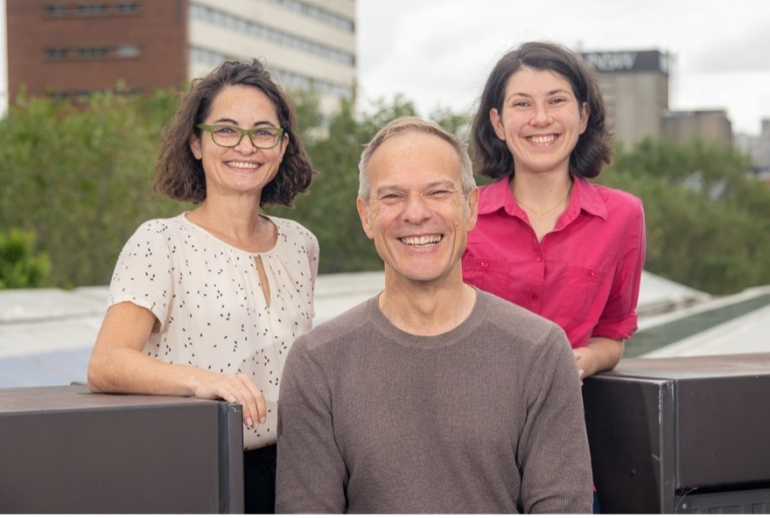
Monitoring and Analysis Toolbox for Compliance in a High DER future

Lead organisation: UNSW Sydney
Partners: AEMO, Solar Analytics
Timeline: January 2021 - March 2024
ARENA Funding: $0.98 million
Total Project Costs: $2.19 million
Project MATCH aims to establish a robust monitoring and analysis toolbox to better understand the behaviour of distributed energy resources (DER) and implications for power system security. It will investigate DER behaviour during power system disturbances and seeks to support secure power system operation under high penetrations of DER.
The study is being led by UNSW Sydney in partnership with the Australian Energy Market Operator (AEMO) and Solar Analytics.
Project MATCH builds on ongoing collaboration between UNSW Sydney, AEMO and Solar Analytics:
AEMO – The Australian Energy Market Operator (AEMO) is responsible for managing electricity systems across Australia. Further information about AEMO and its DER Operations work can be found here.
Solar Analytics – Solar Analytics is an Australian solar software and performance monitoring company. Further information on Solar Analytics can be found here.
CEEM at UNSW Sydney – Project MATCH is being led by UNSW Sydney. Key team members include:
Australia is leading the world in DER installations, particularly rooftop solar. This project aims to investigate and put in place the measures required to operate a safe, secure and reliable power system with high levels of DER.
Power system disturbances can cause voltage or frequency to move outside usual limits. Previous work (see Resources below) has shown that DER can turn off en masse during disturbances and therefore aggravate power system imbalances. DER can also act to support power system security during some events. Improving our understanding of how DER behaves can help manage these security risks and realise their potential benefits.
There is a need for high resolution data sets of DER behaviour under disturbances, analytical tools that can grapple with the complexity of their responses and an improved understanding of DER performance in the field. Together, these measures can increase the accuracy of power system models and help avoid overly conservative approaches to system operation that adversely impact DER deployment.
Project MATCH builds upon prior work undertaken by UNSW Sydney, AEMO and Solar Analytics, including two foundational ARENA funded projects:
1) UNSW Addressing barriers to efficient renewable integration
This ARENA funded project is led my UNSW Sydney in collaboration with ElectraNet, TasNetworks and AEMO. It involves bench testing inverters in the lab to understand behaviours during disturbances and developing composite PV-load modelling capabilities.
Further details are available here and project findings are available here.
2) Enhanced reliability through short time resolution data
Led by Solar Analytics this ARENA funded project aims to improve grid-side data for understanding DER behaviour during disturbance events. The project is undertaken together with AEMO and WattWatchers.
Further details are available here.
Project MATCH (Monitoring and Analysis Toolbox for Compliance in a High DER future) aims to establish robust tools to understand how DER performs in the field during power system disturbances. The study aims to develop:
The outputs from the Project are expected to inform how the Australian Energy Market Operator (AEMO) manages DER response to disturbances, such as implementing changes to constraints or contingency Frequency Ancillary Control Services (FCAS) requirements linked to real-time DER generation. These measures should help ensure the power system is operated safely, securely and reliably with increasing quantities of DER. Better data will provide more robustness in the design of management measures, reduce the need for conservative management measures.
An industry stakeholder reference group will meet over the course of the project. The group includes inverter manufacturers, energy market bodies, distribution network service providers, consumer representatives and metering companies. This will offer an important opportunity to bring key stakeholders together and discuss evidence derived using real-world data.
For further information or if you are interested in participating in Project MATCH please contact Naomi Stringer (n.stringer@unsw.edu.au).
| Title & place of publication | Author | Type | Research area | Links | Year |
|---|---|---|---|---|---|
Consumer-Led Transition: Australia's World-Leading Distributed Energy Resource Integration Efforts |
Naomi Stringer , Anna Bruce, Iain MacGill, Navid Haghdadi, Peter Kilby, Jacqui Mills, Taru Veijalainen, Matt Armitage, Nigel Wilmot | Journal papers | Energy Efficiency & Distributed Generation | IEEE Power and Energy Magazine, 18, RG | |
Observed behavior of distributed photovoltaic systems during major voltage disturbances and implications for power system security |
Naomi Stringer , Navid Haghdadi, Anna Bruce, Jenny Riesz, Iain MacGill | Journal papers | Energy Efficiency & Distributed Generation | Applied Energy, 260, RG | |
Technical Integration of Distributed Energy Resources |
Reports and Working Papers | Energy Efficiency & Distributed Generation | AEMO | ||
Testing Evidence and Analysis of Rooftop PV Inverters Response to Grid Disturbances |
, Leonardo Callegaro, Georgios Konstantinou, Christian A. Rojas, Nelson F. Avila, John E. Fletcher | Journal papers | Energy Efficiency & Distributed Generation | IEEE Journal of Photovoltaics,10 | |
Transformation of the Grid: The Impact of Distributed Energy Resources on Bulk Power Systems |
Naomi Stringer , Jenny Riesz, Ryan Quint, Lisa Dangelmaier, Irina Green, David Edelson, Vijaya Ganugula, Robert Kaneshiro, James Pigeon, Bill Quaintance | Journal papers | Energy Efficiency & Distributed Generation | IEEE Power and Energy Magazine, 17 |